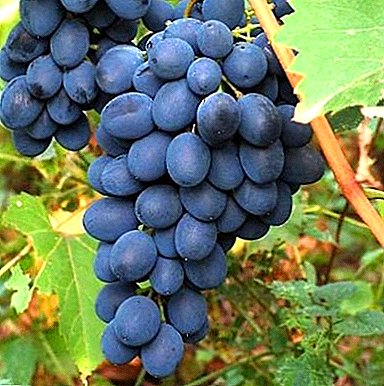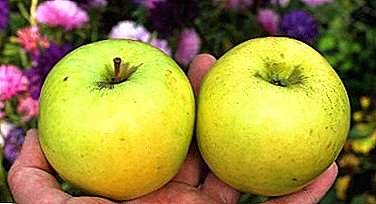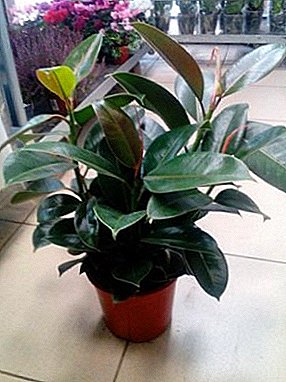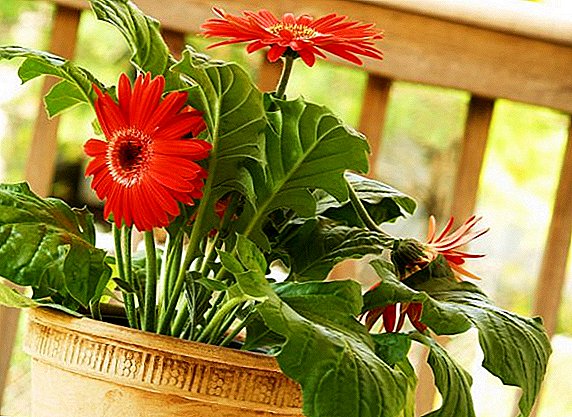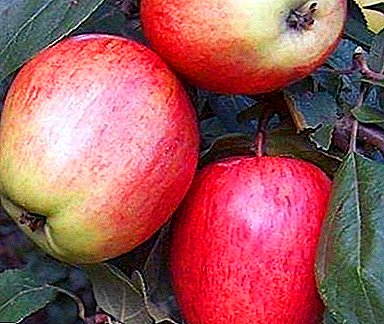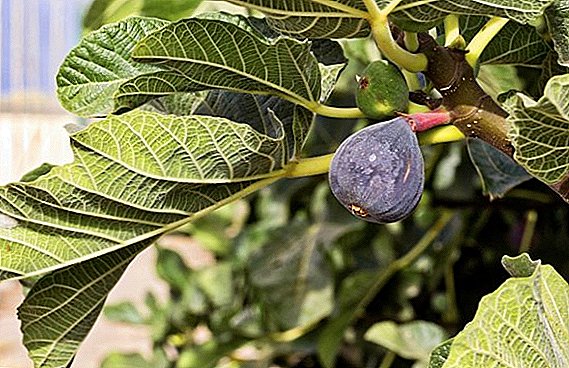 Fig, or fig tree - a plant that brings useful and tasty fruits, widely used for human consumption, in cosmetology and traditional medicine. Few know that it can be grown not only in southern countries, but also in cool regions. Today even varieties that survive at -20 degrees are bred. Also in the middle lane and northern areas, the plant is grown in pots. The main condition for the successful cultivation of figs - the right agricultural technology, in particular, and shelter for the winter. More details on how to cover a tree in front of frost, we'll talk below.
Fig, or fig tree - a plant that brings useful and tasty fruits, widely used for human consumption, in cosmetology and traditional medicine. Few know that it can be grown not only in southern countries, but also in cool regions. Today even varieties that survive at -20 degrees are bred. Also in the middle lane and northern areas, the plant is grown in pots. The main condition for the successful cultivation of figs - the right agricultural technology, in particular, and shelter for the winter. More details on how to cover a tree in front of frost, we'll talk below.
How to prepare for winter
Preparation of figs for the winter is included in the list of mandatory measures for the care of the plant, if it grows in areas with frosty winters. Even the most frost-resistant varieties can die in the winter in the event of non-compliance with important conditions. These conditions include:
- pruning;
- top dressing;
- watering;
- shelter
Important! One of the guarantees of survival in the frost of figs is the correct selection of the variety. The most frost-resistant varieties are “Brunswick”, “Kadot” (they withstand temperatures down to -27 degrees), “Brown Turkey”, “Chicago Hardy”, “Randino”, “Rouge de Bordeaux”.
Pruning
In order for the tree to go well in the winter, and besides, it brought abundant harvests next year, it will be necessary to form a bush. The bush should not be too thick, because otherwise it will fasten less fruit or they will not have time to ripen due to lack of light. In addition, the risk of developing diseases will increase.
Familiarize yourself with the cultivation of the fig tree in the open field.
Where the frosts are not too strong, pruning will need to be carried out as part of autumn care activities. In the northern regions, it must be done in spring in order for the plant to recover.  Trimming is carried out with sharply sharpened shears. In the first year after planting, they produce a formative haircut — they leave one sturdy shoot, and the rest are cut. The following year, branches that have reached a length of 1.3 m are cut to one bud. A year later, shoots that look outward are cut by 50%.
Trimming is carried out with sharply sharpened shears. In the first year after planting, they produce a formative haircut — they leave one sturdy shoot, and the rest are cut. The following year, branches that have reached a length of 1.3 m are cut to one bud. A year later, shoots that look outward are cut by 50%.
In the future, the crown is formed from 3-4 branches, leaving the trunk length at 40-60 cm.
Important! Sites of shoots should be treated with garden pitch to avoid infection in the tree.Another way to trim - fan. With him, before the plant reaches the age of two or three, only branches with injuries and frostbite are cut off. Then all the shoots that grow up, cut off, and the lower - bend closer to the ground and bred on the sides. Bending is carried out after irrigation in 2-3 stages with intervals of 4-5 days. Fix shoots need with pegs driven into the ground, and ropes.
 In those regions in which autumn pruning is recommended, it is produced after leaf fall, that is, in the second half of autumn.
In those regions in which autumn pruning is recommended, it is produced after leaf fall, that is, in the second half of autumn.VIDEO: FORMATION OF A BIT OF A TOOL CONDITION FOR CULTIVATION
Top dressing
During the period of fruit formation, a fig tree can be fed only with potash fertilizers, which are responsible for the formation of wood. It is important to ensure that there is no nitrogen in the mineral complex introduced in the fall, which will provoke an unnecessary increase in green mass during this period. After the tree has left, fertilizing is no longer produced. In order not to provoke burns of the root system, fertilizers are applied only after the plant is abundantly poured.
The fruit of the fig tree is often used in traditional medicine, cooking and cosmetology.
Watering
Watering is also an important procedure when preparing for winter. It is necessary to understand how to properly implement it in the fall, as trees that are too moist will freeze and a dry root system will not be able to survive the winter.
Before the onset of frost, watering the tree should be kept to a minimum. The last time it is moistened in September, after harvest. If autumn is very rainy, then in order to avoid overwetting the root system, it is covered with a film, which is removed in dry time. 
Did you know? Figs is considered one of the most ancient plants, which began to be cultivated. Thus, the ancient Greek philosopher and naturalist Theophrastus made a description of hundreds of figs. Interestingly, the best of them he called proper names.
Do I need to cover
Figs recommended cover. In regions with warm winters, only the root system warming with spruce branches, sawdust, peat, that is, mulching of the root circle will suffice. In cold climates, a safe shelter is required for the entire tree. Non-frost resistant varieties hardly tolerate a temperature drop of up to -12 degrees. The smallest problem that an unopened tree can face is a reduction in yield. The saddest outcome is the complete freezing of the roots and shoots and the inability to recover.  2-3 weeks after fruiting, we begin to gradually bend the branches to the ground
2-3 weeks after fruiting, we begin to gradually bend the branches to the ground
Figs can be successfully grown as a houseplant at home.
Shelter process
Shelter should be constructed no earlier than the average daily temperature will be established at the level of +2 degrees. The root zone is mulched, and shoots formed by a bush or fan are covered with a covering material, preferably light-colored, to reflect the sun's rays. For this purpose fit:
- polypropylene bags of white color (it is possible from under granulated sugar);
- lutrasil;
- agrofibre;
- canvas;
- sackcloth;
- tent fabric.
Important! In order to have less care during the shelter, you can take care in advance - at the stage of planting a fig tree. In areas with a cold climate, it can be planted in trenches, which will serve as a shelter during the frost.
Ways of shelter for the winter and from pests
The method of shelter will depend on the method of bush formation, planting and climatic conditions:
- Ground. In more temperate zones, it will be enough to cover the bush with earth. This method is similar to the one that cover the grapes. Branches bend to the ground, pin and pile soil on them. This method is very simple, but not the most effective, because if the winter is snowy or slushy, then the moisture can get to the roots, and in the end they will freeze. For the best effect, a 5-15 cm layer of fallen leaves or straw can be poured on top of the soil. You can also make a "puff pie" of a 5-15 centimeter layer of soil, a 5-15 centimeter layer of fallen leaves, straw, a 25 centimeter layer of loose soil.
- Plant layer and roofing material. In areas where winters are characterized by sharp drops between frosts and thaws and the lack of snow cover, a good way is to cover the branches with a layer of vegetation, and then - roofing material.
- Polyethylene film. Some gardeners are building a film house over a tree. However, this method is not very good because it creates the effect of a sauna, which will adversely affect the development of the plant. Therefore, such a shelter will need to be periodically removed to ventilate the tree.
- Humus and straw. Another way is to pour a 10-centimeter layer of humus and straw, and from above to stretch the film on the frame and cover the construction with sacking.
- Car tires. They decorate the tree and cover the top, thus providing insulation.
- Formation of sheaves. Also one of the simplest ways is to form sheaves from shoots. The branches are collected in bundles and bend down to the ground. Then cover them with boards or plywood and strengthen the earthen layer.



Did you know? The fact that the fig is excellent restores power, knew even Alexander of Macedon. He took his fruits on military campaigns..To avoid the penetration of rodents to the root system, bags of poison are placed in a shelter. In order to prevent harmful insects from reaching the sheltered tree, you should carefully select natural materials for shelter, inspect them for the presence of larvae. Properly constructed shelter with good air access can prevent the development of fungal diseases.
When can I take shelter
Shelter begin to clean in early April. This should be done very carefully so as not to damage the shtamb and shoots. For a while, until the threat of spring frost has passed, the plant can still be covered with film or polycarbonate. The main thing is not to keep him in the shelter under the warm sunshine in order to avoid over-riding.
After removing the shelter, it is important to start regular care activities - sanitary pruning, watering, feeding.
It will be useful for gardeners to learn how and how to cover grapes, apples, thuja, roses, raspberries, lilies, and weigela for the winter.
Thus, the preparation of figs for winter is an important step in the care of figs, from the correct conduct of which depends on its health and yield. Preparing the plant for wintering, you should stop feeding and watering in a timely manner, cut off the escapes and build a shelter. There are a lot of materials and ways of shelter. Each owner of the fig tree can choose the most appropriate for themselves.



